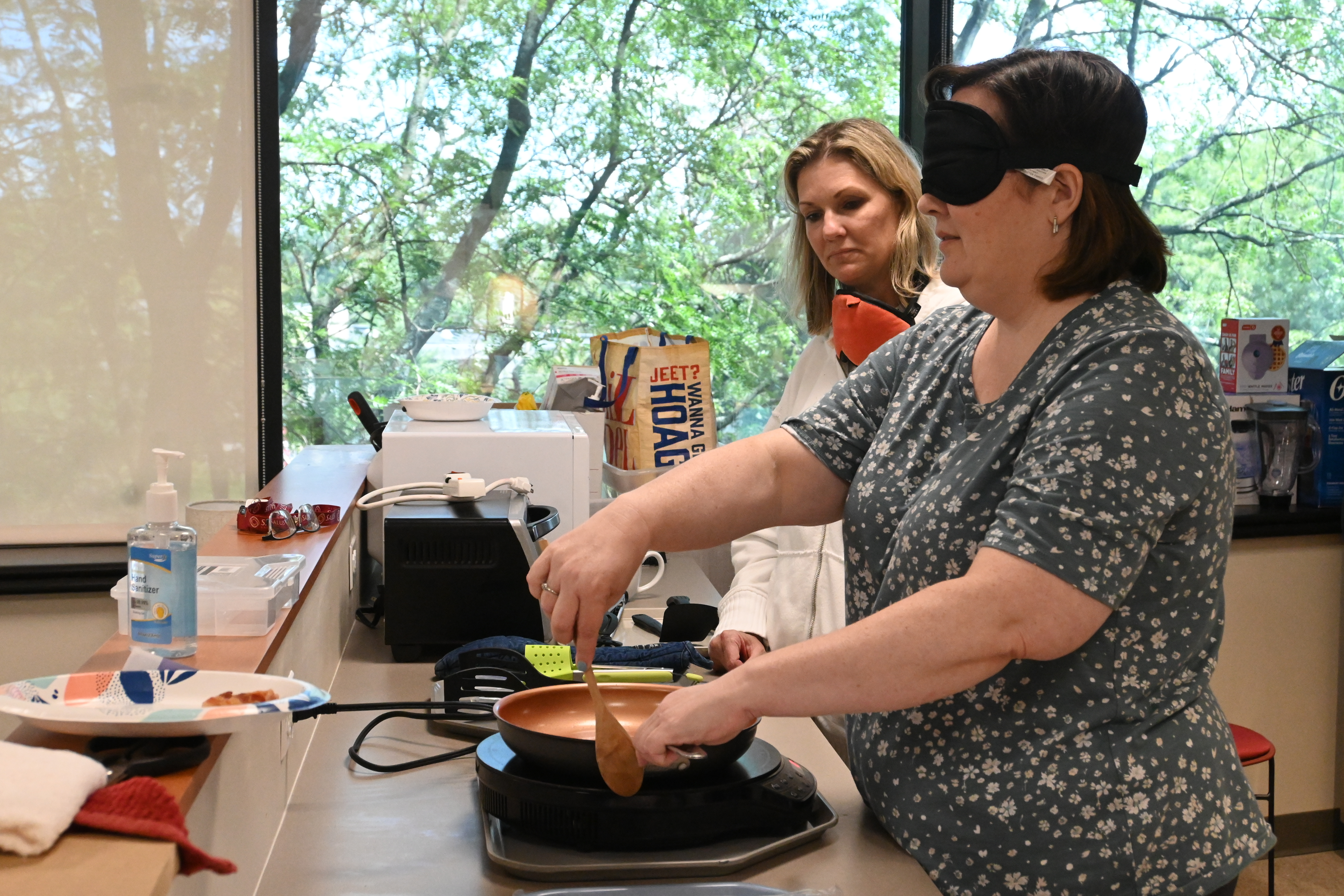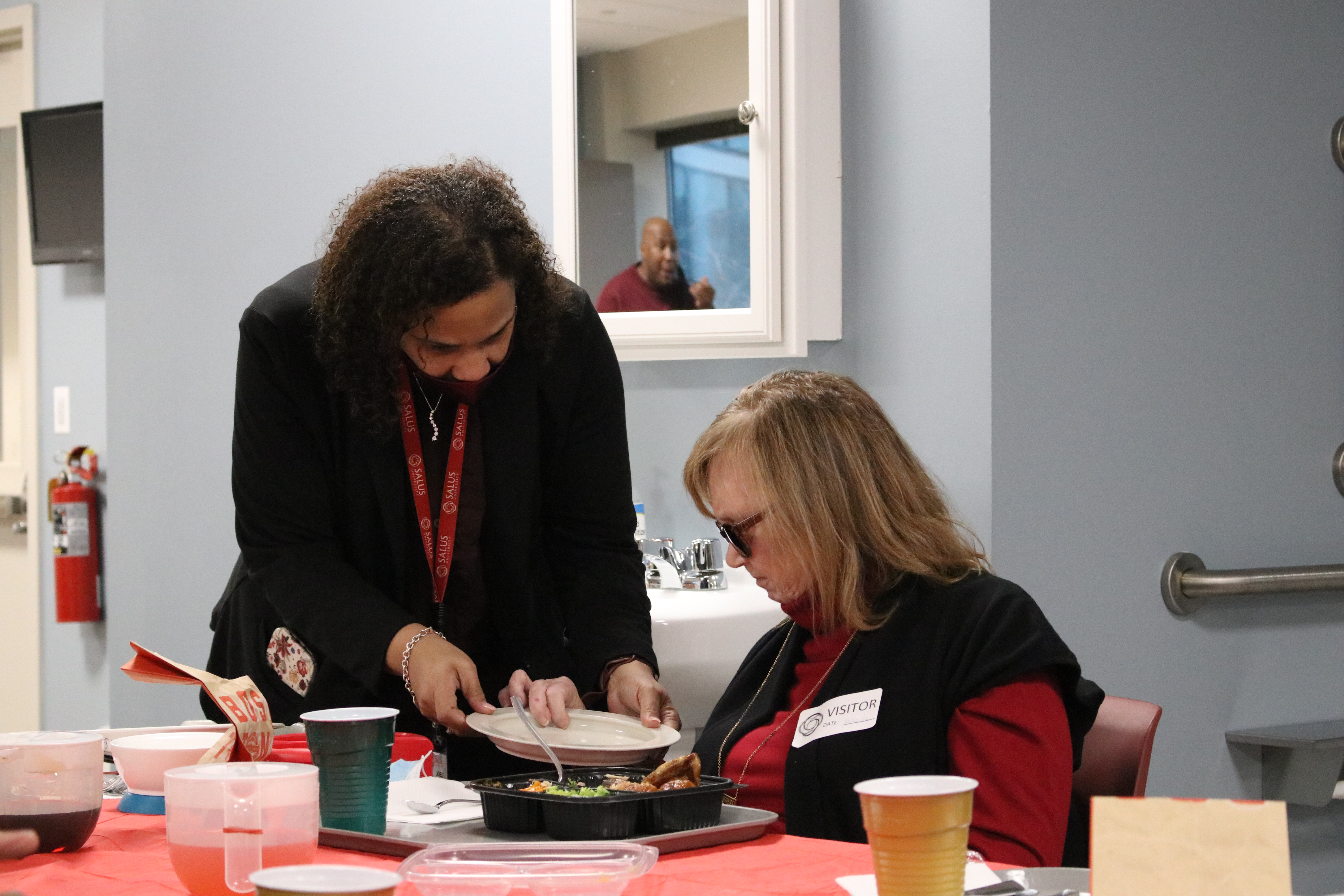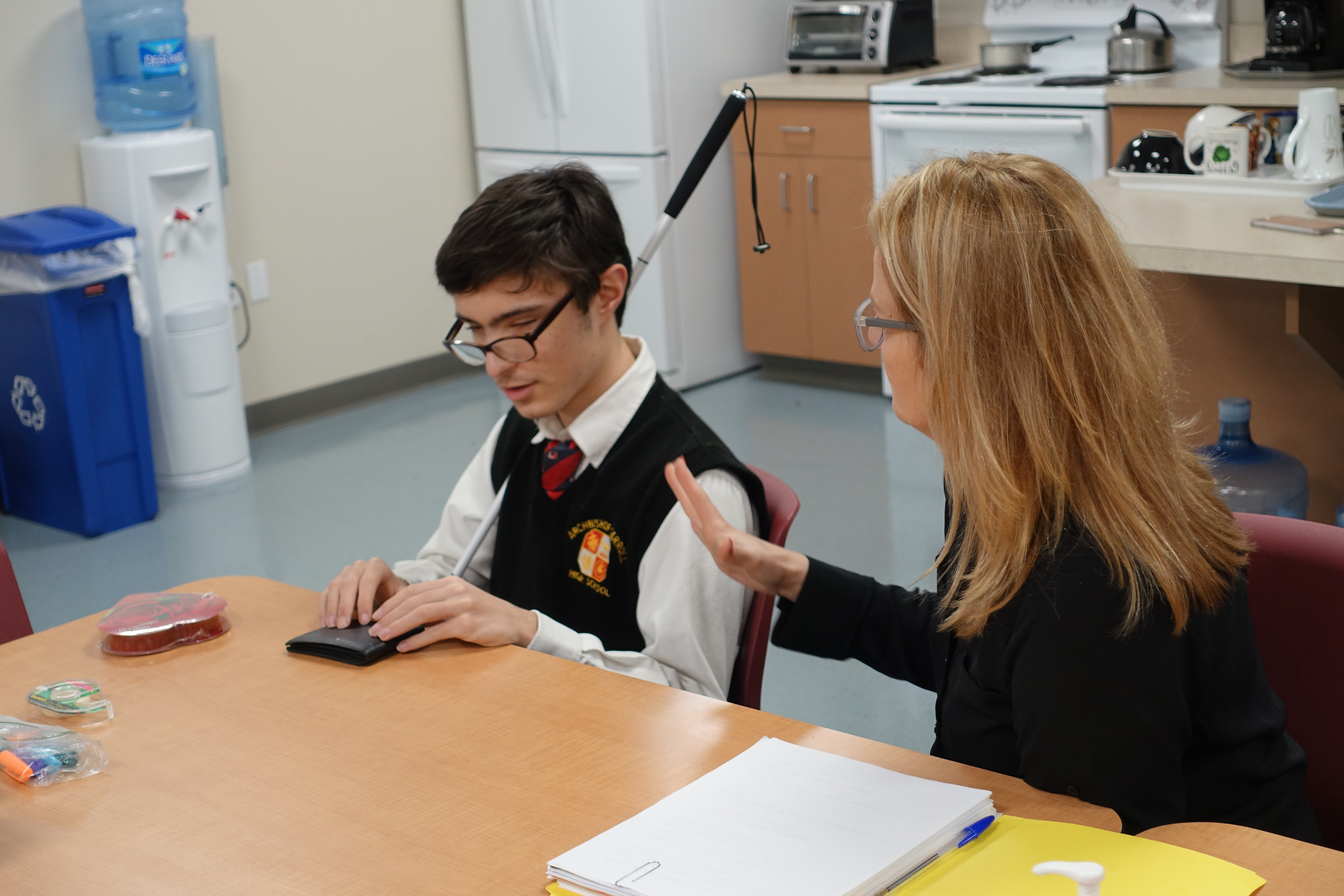Q: Introduce yourself
A: My name is Kinshasa Coghill. I am a graduate of Salus University's Blindness and Low Vision Studies (BLVS) programs, receiving a master's in Vision Rehabilitation Therapy (VRT) and a certificate in Low Vision Rehabilitation. I currently work as a VRT and a Low Vision Therapist.
Q: What is the role of a VRT?
 A: Imagine your friend explaining she is having problems reading her mail or the time display on the cable box approximately four feet in front of her; it appears some numbers are missing. A person who once had perfect handwriting is now unable to see where to sign her name on her check. Or maybe she mentions she's having challenges with knowing how high the flame is when she's preparing her meal.
A: Imagine your friend explaining she is having problems reading her mail or the time display on the cable box approximately four feet in front of her; it appears some numbers are missing. A person who once had perfect handwriting is now unable to see where to sign her name on her check. Or maybe she mentions she's having challenges with knowing how high the flame is when she's preparing her meal.
The friend may be experiencing moderate or severe changes in her vision, and because of that, she's experiencing challenges with completing her activities of daily living.
That's where a VRT, would come in, they would assist with non-visual skills and using adaptive equipment strategies to complete daily living tasks. A VRT ensures the client is able to function independently, efficiently and safely.
Q: What does work as a VRT look like? Do you have a primary patient population?
 A: In some cases, I am working with older adults who have experienced changes in their vision due to glaucoma, cataracts, or macular degeneration. I'm here to teach them non-visual skills to complete tasks such as safely regulating the flame on their gas stove, using the air fryer, or any tools they use in the meal preparation process.
A: In some cases, I am working with older adults who have experienced changes in their vision due to glaucoma, cataracts, or macular degeneration. I'm here to teach them non-visual skills to complete tasks such as safely regulating the flame on their gas stove, using the air fryer, or any tools they use in the meal preparation process.
Sometimes, I work alongside parents to provide training to help their children born with blindness learn how to complete everyday tasks to live up to their potential and independence.
As a vision rehabilitation therapist, I create individualized training programs to meet the needs of those with challenges seeing due to low vision or no light perception.
Q: What does work as a low vision therapist look like?
A: As a low vision therapist, I provide training in optical devices to make print and images bigger and bolder and improve task lighting. The instruction I provide to persons living with changes to their vision can help them resume a few visual tasks that occur within arm’s length, for example, reading, sewing, and watching television, with more ease and efficiency.

Q: Why did you pursue a career in Blindness and Low Vision Studies?
A: After completing my undergraduate degree from Temple University, I was unsure of how to be of service to individuals. I thought about becoming a psychologist but decided against it because of the additional six years of education. I was told about the field of blindness and low vision studies and met with the department chair of Vision Rehabilitation Therapy at Salus University. What I like about Salus is the integration of low vision throughout the four disciplines and decided to obtain my certification in low vision rehabilitation as well.
Every day is a different day. I enjoy what I do. I love being a vision rehabilitation therapist.